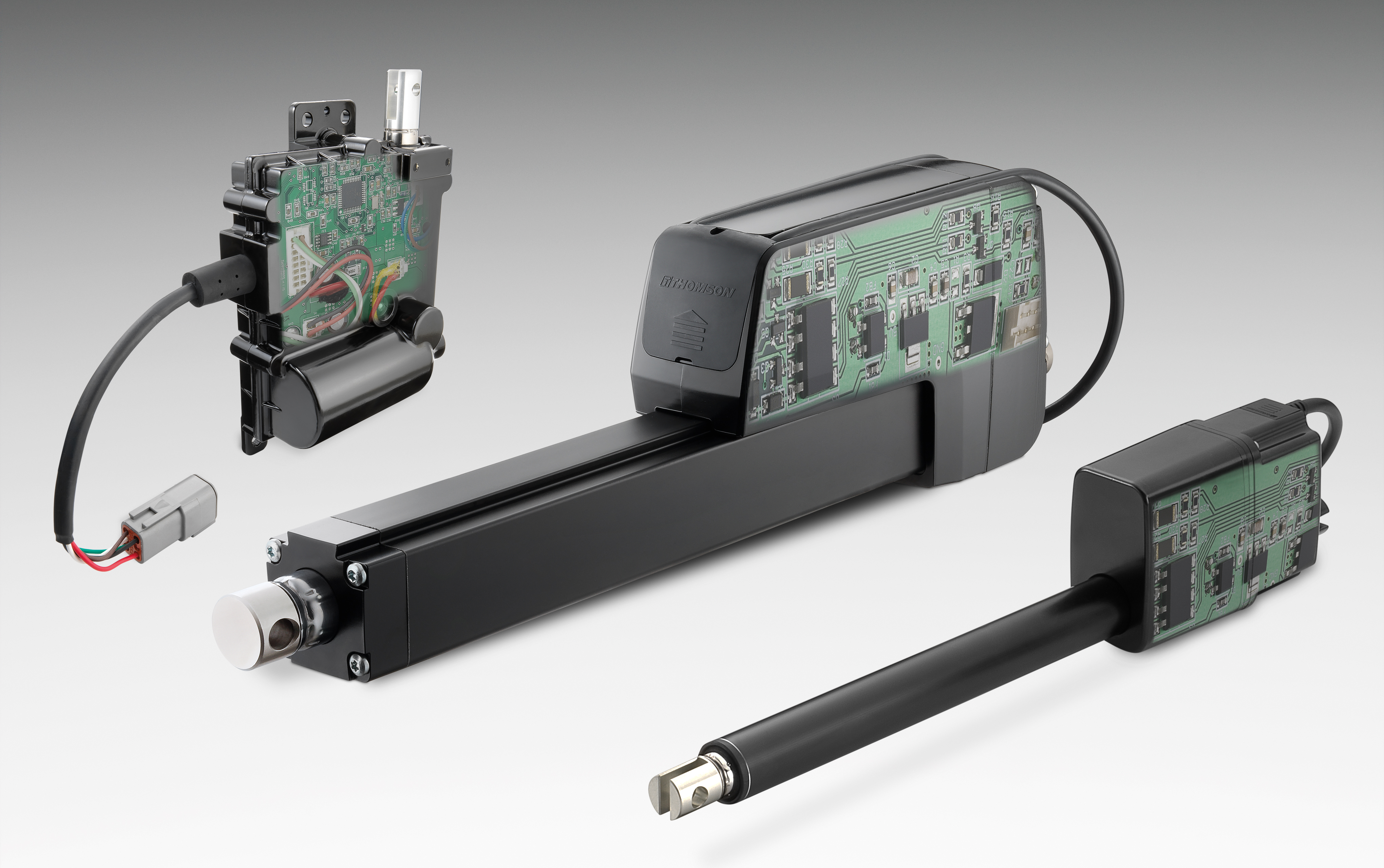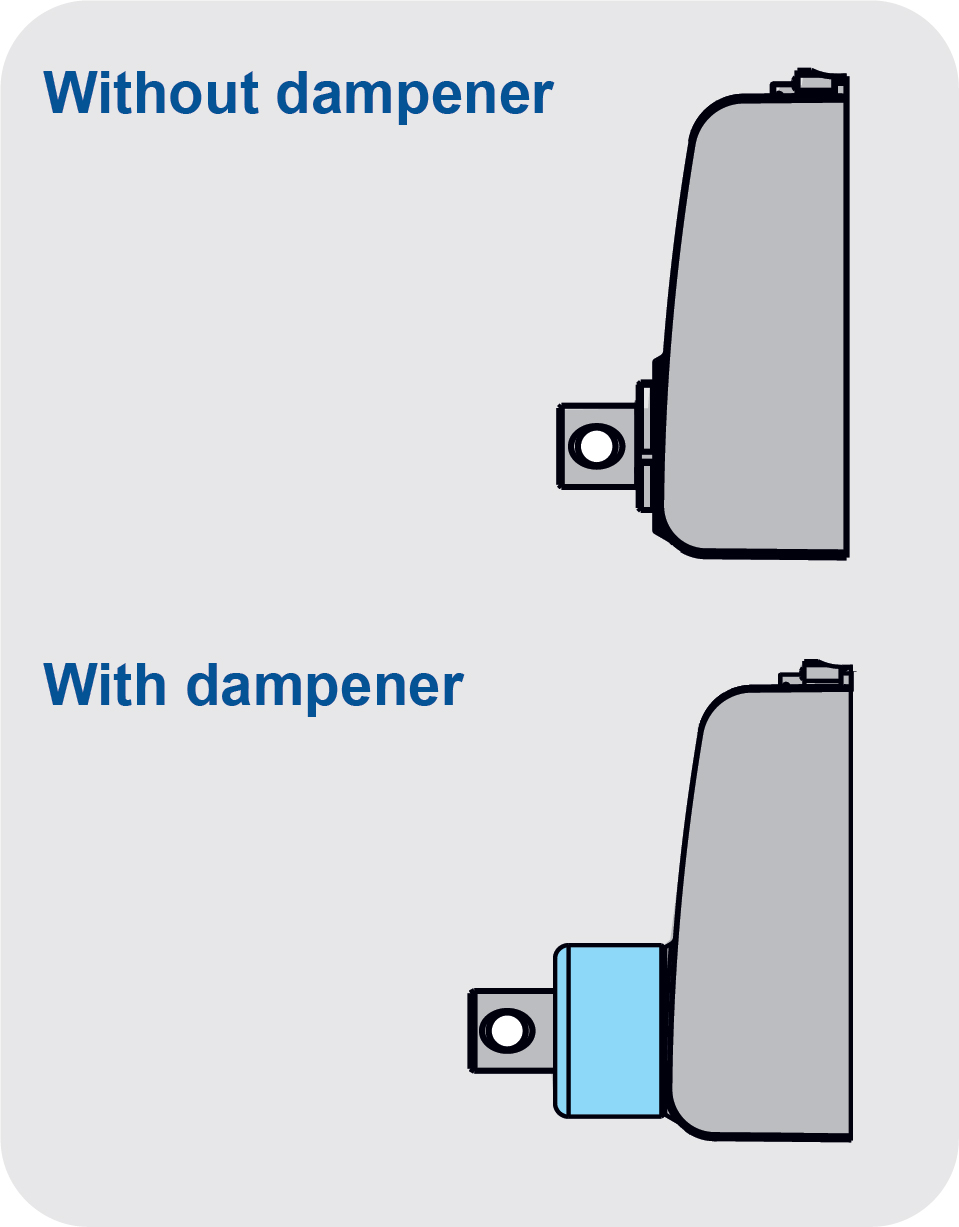When electromechanical actuator designers began integrating electronics inside their housings, it gave a control and efficiency advantage that opened the door to applications that had long been the sole domain of hydraulics cylinders. Those same electronics, coupled with recent experience applying electric actuators in new applications, now enable a modular design strategy that makes customizing electric actuators easier, further enhancing their advantages over hydraulics.
Modularity comes to motion control
Modular design approaches are common in many other markets. In the lawn and garden market, for example, some string trimmers come with a basic handle, motor and connector, to which the user can attach a leaf blower, edger, rototiller or the original trimmer. In the electronics industry, the Apple apps platform has spawned the creation of thousands of new productivity and entertainment options. Electric actuator manufacturers are now providing the same kind of interchangeable functionality, giving machine designers even more reasons to convert from hydraulics.
Adding electronics to electromechanical actuators was a breakthrough in modularity, opening the door to a myriad of options for software to provide control, analytics, diagnostics and many other capabilities not feasible with hydraulics. This intelligence, coupled with other customizable components such as adapters and wiring harnesses, is making it easier and much more cost effective to add accessories, hardware and software. Three newer examples of modules that could be easily added to a core electric actuator are force feedback, load dampening, and manual release and override.
Adding force feedback
Knowing how much strain an actuator undergoes is important to users for many reasons, including control and maintenance. Adding force feedback on a hydraulic system is possible but complex. Hydraulic technology design is very mature, and changes would involve redesigning many components, which would only be relevant to the immediate application. Without electronics, system designers are forced to use less sophisticated measurement techniques, like calculating pressure from changes in current flow at a pump.
Adding force feedback to a conventional electromechanical actuator is also challenging. This type of functionality also typically requires redesigning the actuator from the ground up. The manufacturer might start with an existing structure, but would have to make size, shape or other adjustments. While designers end up with a custom solution, getting to the solution is difficult, the components are potentially more expensive, and the solution is likely not easily adapted for other applications.
Designing for future adaptation is much easier with a smart actuator. Some 80 percent of the technology of a smart actuator is core technology that could be the same in multiple applications. (Figure 1) Leading manufacturers design this core technology separately from the force feedback function, utilizing a device such as a strain gauge, a more representative measure of pressure than perhaps relying on current draw from the motor, for example. Connecting the strain gauge is simply a matter of plugging in a couple of wires from the actuator to the control system, rather than adding complex componentry to measure pressure in a hydraulic system.

Figure 1. With smart electric actuators, instead of spending valuable time wiring, installing and testing, you can immediately take advantage of plug-and-play control functionalities such as force feedback. (Image courtesy of Thomson Industries, Inc.)
Load dampening
That same core technology remains unchanged when used to provide load dampening. The ability to withstand shock loads has long been the purview of hydraulics. The incompressibility of the hydraulic fluid helps absorb shock and prevents the vibration from damaging all other system components. Fortunately, it is now possible to add this shock dampener to an electric actuator without needing to change the core structure.
A dampener can be attached to an adapter on the rear of the actuator, adding to the component’s total length and weight. (Figure 2). This adaptation comprises shock-absorbing washers that elastically deform and dissipate energy in the load path of the actuator. When the actuator extension tube is hit with a shock load, the attached dampener extends or compresses, depending on the direction of the shock load force, and then returns to its original position.

Figure 2. The dampening option is mounted between the rear adapter and the housing and allows the actuator to absorb shock loads. (Image courtesy of Thomson Industries, Inc.)
The travel distance depends mainly on the power of the shock itself, but load size, temperature, shock load speed and mounting position also affect it. The dampening adapter prevents positive and negative shock loads from acting on the other mechanical components of the thrust assembly, including the ball nut, ball screw and thrust bearings. It extends the life of the actuator, removing shock loading as a competitive advantage for hydraulics in many more applications.
Manual brake release and override
When the core technology involves a brushless motor, which is increasingly the case in actuator designs, a standard core technology could accommodate manual brake releases and overrides, which provide safety, maintenance and energy conservation advantages over hydraulics.
A manual brake release module allows operators to move a machine component manually when it is stuck, broken or has other problems. This module enables the machine to travel under the power of applied load and/or gravity, providing regenerative current to a power supply or battery to help control movement. (Figure 3)
Figure 3. In situations where a machine component is stuck, breaks or finds itself in an awkward position, an electric actuator can be moved manually into a position that allows the user access for maintenance. A manual brake release option disengages the holding brake so that the extension tube can extend or retract under load and assisted by gravity to the desired position. (Image courtesy of Thomson Industries, Inc.)
These capabilities can be easily added to an actuator that uses a brushless motor and is designed with adaptability. Getting such benefits from hydraulic systems is very difficult, and often impossible. Hydraulic systems must always be powered on and constantly consume energy. There is no way to shut them down for maintenance without compromising the productivity of the application.
Life in a modular world
In a modular world, designers select add-ons to suit their application just as they now do for many other types of components. They would select their part, voltage, load and stroke to establish core drive system needs, and then select additional options, such as environmental conditions, and control and electrical requirements as add-ons. Useful add-ons might also include force feedback, load dampening and braking/override options mentioned above, depending on the accessories a given manufacturer offers.
In a truly modular world, the ability to design accessories for a common technology platform rather than from the ground up incentivizes the creation of new, previously unimaginable functionality. This approach suits electric actuator makers well. They are consistently pushing the envelope to deliver new value and more powerful solutions, and exploring new motor technologies, alternative screw technologies and much more.
While physics dictates that actuators can move heavier loads just by making the screw and motor larger, the ultimate challenge is to achieve maximum output within the same or smaller envelope. Exploiting the possibilities of modular design is one way to address this challenge. Using add-ons will have maximum payback, perhaps, when replacing sprawling hydraulic systems with electric actuators


